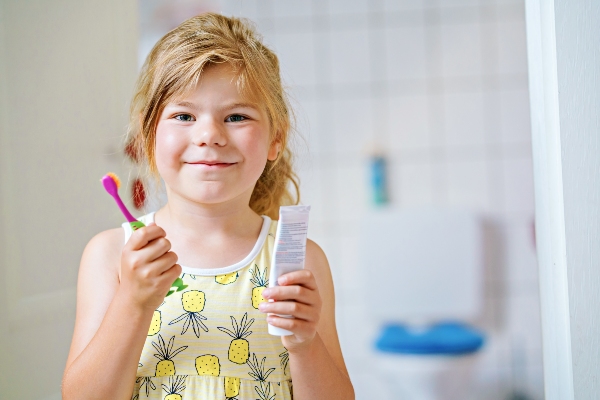Understanding Dental Fillings for Kids: Types and Procedures

Dental fillings for kids can help your child achieve better dental health. Studies show that children are prone to dental decay. Cavities tend to form because of their love for carbohydrate-rich foods or drinks. Understanding dental fillings can help prepare you and your child for treatment day. Here are the different procedures and types of dental fillings for kids to consider.
Different types of fillings for kids
A pediatric dentist will assess the child’s teeth first. The exam will reveal the teeth that will need dental fillings for kids. Restoring the teeth with the right filling can strengthen and seal them. It will also prevent future cavities from forming. The following are the different dental fillings for kids the dentist may offer:
- Composite resin fillings are a mixture of plastic resin and glass particles. This restoration bonds to the tooth and supports the remaining dental structure. The dentist will match the material’s color to the color of the natural teeth. It provides a more natural appearance, especially if the cavities are in the front teeth.
- Amalgam or silver fillings are made of copper, tin, mercury, and silver. These metal fillings can withstand the pressure of chewing and biting. Dentists usually use them on the back teeth. Amalgam fillings are the most affordable dental fillings for kids.
- Glass ionomer fillings are made from acrylic and glass materials. They are also referred to as man-made dentin. Glass ionomer fillings release fluoride, which makes the teeth stronger. However, these fillings are less durable than amalgam or composite. Replacing them may happen more frequently.
About stainless steel crowns
Protecting primary teeth is a priority. These teeth are not as strong as permanent ones, especially when cavities develop. Placing stainless steel crowns is a good alternative for dental fillings for kids because each one is durable and lasting. There is no need to replace them all the time. These crowns only need a short treatment time.
The procedure
The dentist and staff will first help the kid get used to the clinic. Allowing the child to look around and ask questions can help bring positive thoughts about the procedure. The dentist can recommend laughing gas or oral sedation to calm the child down. Numbing the area will come next. The dentist will then remove the decayed areas of each tooth. The dental fillings will be placed next.
Exposing the filling to a curing light for a few seconds will follow. This light will harden the filling material to the teeth. The dentist will adjust the dental fillings for kids to make sure that the child will feel comfortable with them. Grinding down some sections will allow the fillings to match the contours of the treated teeth to the corresponding upper or lower teeth.
Preparing the child
The child must understand the process of getting dental fillings for kids. Explaining the steps can help the child feel comfortable with what the dentist will do. Answer the child’s questions if there are any. Use characters to make the situation clearer to the child.
Start changing the child’s diet. Look at what the family eats and switch some of the foods for healthier options. Sticky and crunchy candies, as well as sweet drinks, should not be on the grocery list anymore. Also, encourage the child to brush or rinse right away after enjoying some treats. Doing so can help ward off plaque and tartar formation. It can also prevent filling damage.
Pay attention to the child’s feelings
Remember that the child will start feeling pain after the anesthetic fades. Prepare over-the-counter medications to ease the child’s discomfort. The child must only drink or eat when the mouth regains feeling. Waiting will ensure a more comfortable, injury-free eating experience.
Daily oral care habits can keep the treated area clean and bacteria-free. Brush lightly for two minutes and floss once every day. Research reveals that careful brushing and flossing can keep the fillings intact. Supervise the child’s oral care habits each day.
Stop bruxism
Teeth grinding at night or during stressful events can destroy dental fillings for kids. Research shows that most children suffer from bruxism and do not know it. The dentist can provide a custom-fit mouthguard. This dental appliance can protect the teeth and fillings from the pressures of bruxism.
Dental fillings for kids can restore and protect your child’s dental health
Cavities can form at any time. Spotting and treating them right away can seal the teeth. Using the right dental fillings for kids can keep baby teeth intact until the adult ones emerge. It can also enhance your child’s young smile. Working with your pediatric dentist can help your child achieve better dental health in the future.
Request an appointment here: https://www.grandparkwaypediatricdental.com or call Grand Parkway Pediatric Dental at (832) 579-0960 for an appointment in our Richmond office.
Check out what others are saying about our services on Yelp: Dental Fillings for Kids in Richmond, TX.
Recent Posts
Dental fillings for kids are crucial in preventing many dental issues. Baby teeth can develop cavities. Correcting this problem is important for developing permanent teeth. Here are the details on how preventive dentistry uses dental fillings for kids.Research shows that many school-age kids suffer from cavities. This disease is common even if it is preventable.…
Dental fillings for kids are one of the most common treatments for tooth decay in children. The earlier tooth decay is detected in a child’s tooth, the easier it is to treat. Let us examine why treating childhood tooth decay is crucial and how a pediatric dentist treats it.According to the Centers for Disease Control…
Dental fillings for kids can be nerve-wracking for some kids, likely due to the necessary tools. While we aim to make this simple process as smooth and painless as possible, we need your help. Getting a firm grasp on what your kids can expect during this procedure and how to prevent a future need for…
Getting dental fillings for kids can help improve your child’s dental health. It can restore the affected teeth and relieve your child’s pain. Understanding the process can help you prepare your child for the next appointment. Here are the details on what parents like you must know about dental fillings for kids.The dentist will discuss…


